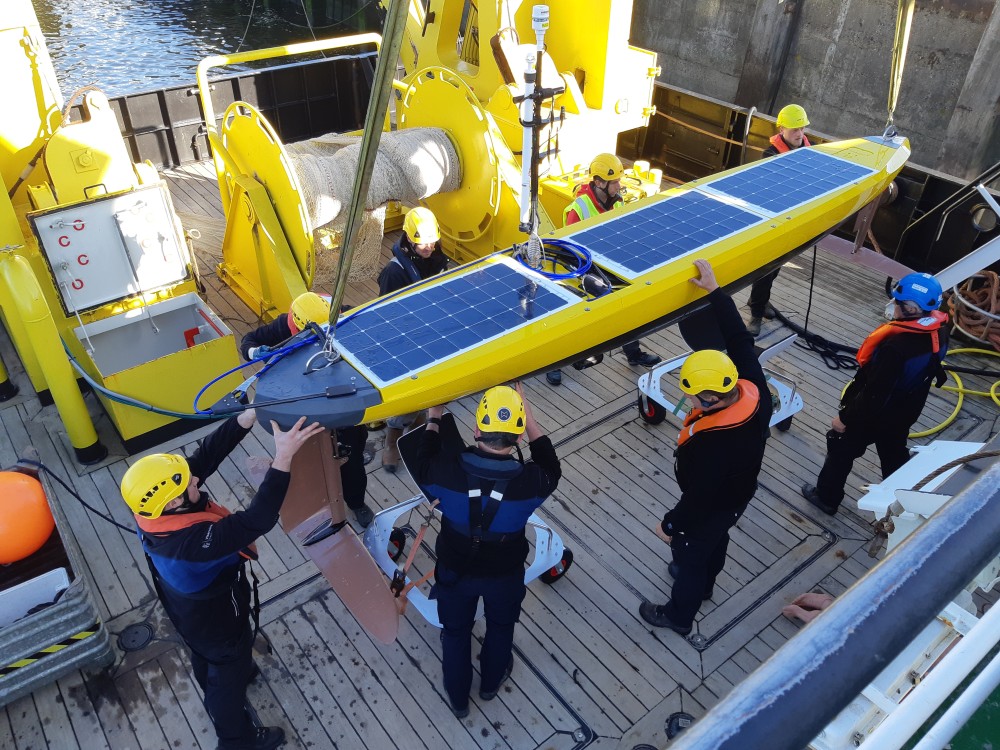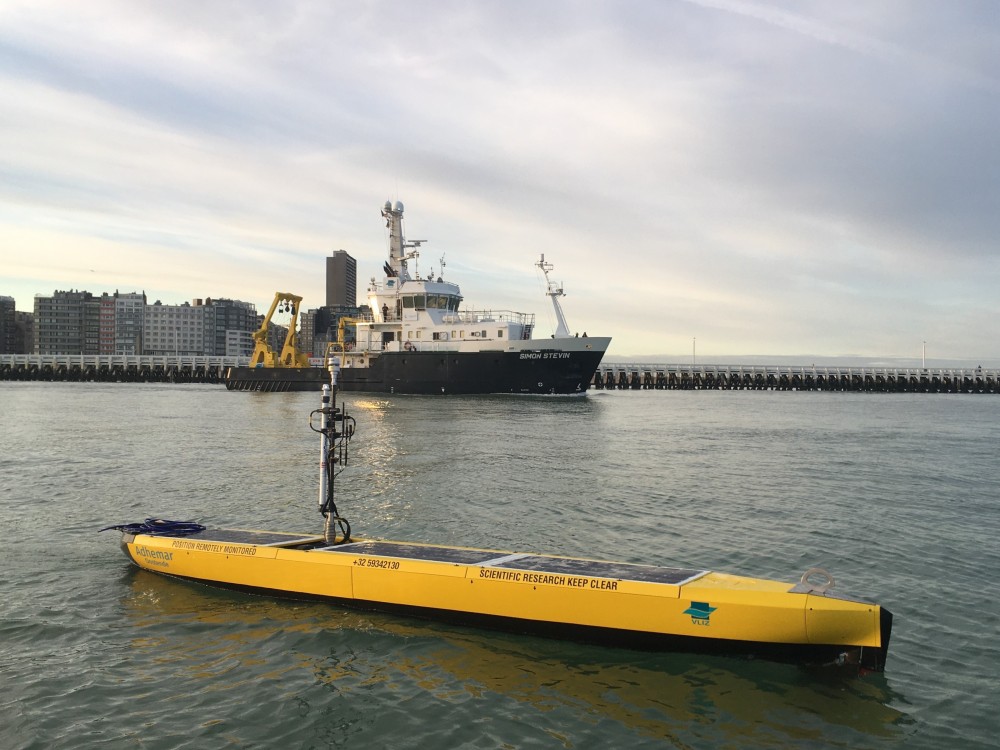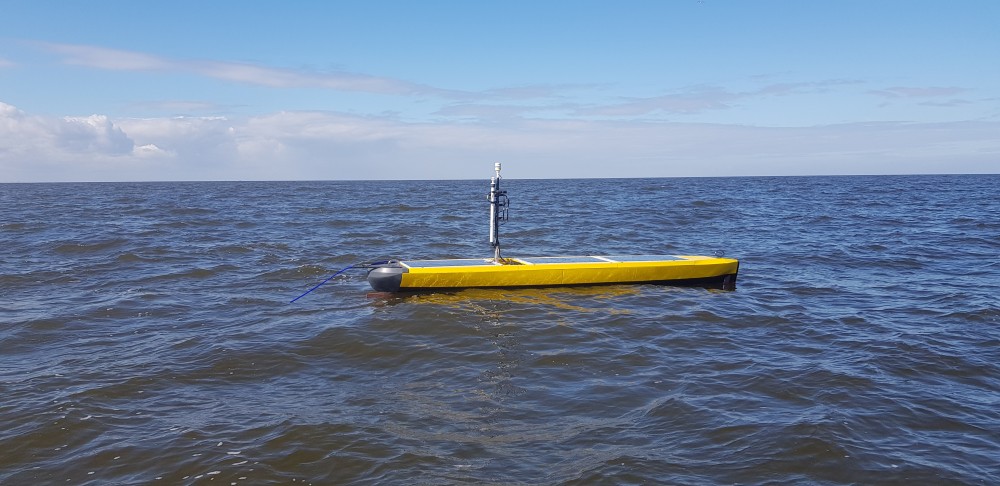An unmanned surface vehicle (USV) is a small boat, which is operated remotely by a set of trained pilots without the need of a person onboard. USVs have become increasingly common in the world of marine robotics over the last few years.
USV Adhemar is a so-called Autonaut (Seiche), which uses the movement of the waves to produce forward motion. This means that a wave-propelled USV, like the Autonaut uses far less energy than a normal vessel at sea. This, in combination with the Autonaut’s large solar panels, allows USV Adhemar to stay at sea far longer than most USVs.
Hence, the Autonaut can collect data when research vessels are unavailable, at a fraction of the cost. USV Adhemar is equipped for the measurement of certain environmental parameters of the water column and meteo conditions and as it is a silent vehicle, it is perfectly suited for underwater sound measurements.
Technical details
- Physical dimensions
- Length: 5 m
- Width: ± 0.5 m
- Draught: 1.35 m
- Weight: 250 kg
- Operational characteristics
- Endurance: Multiple weeks
- Solar panels to replenish onboard batteries
- Communication
- UHF Radio link
- Iridium satellite
- Scientific payload
- CTD - Seabird Fastcat
- Chlorophyll A, turbidity, organic matter - Wetlabs Ecopuck
- Oxygen - Aanderaa 4831
- Forward and Aft facing cameras
- ADCP - Teledyne RDI Workhorse 600 kHz
- Acoustic receiver - Vemco V2RC mini
- Wave motion sensor - Aanderaa MOTUS
- Hydrophone - Seiche MicroPAM
- Hagan Gen-X pCO₂ - a sensor for measuring CO₂ fluxes between ocean and atmosphere
All of this robot's features can be found in the USV Adhemar specification sheet.


